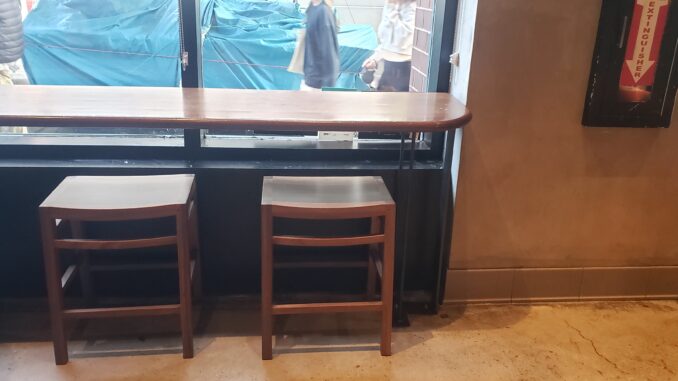
By Kiara Jones-Ford
Walking into any sit-down locations in the last two years has resulted in being met with the following environments: a sign that limits seating time, a lack of open outlets, and a bathroom that requires a code on a receipt. Libraries across the country are struggling to keep their doors open. Homelessness is at an all-time high, and even public benches are constructed so that they can not rest. All of these things are a sign that we as people are losing “third places.”
Coined by sociologist Ray Oldenburg, the term is defined as “physical settings that have throughout history encouraged a sense of warmth, conviviality, and that special kind of human sustenance we call community.” Such places include parks, cafes, bars, libraries, and even malls–once upon a time, the mall was a popular place for teens to hang out with just $20 in hand.
There are several uses for these spaces. Beyond just a place for people to meet and hang out, some will go to cafes to study or work, especially students. Parks are a great place for folks to host public events, and even on the sidewalk you could find benches to sit down and rest. Libraries act as large hubs with access to literature, computers, and facilities such as bathrooms and protection from the outdoor elements for a brief period.
Within the last two decades, however, these spaces have decreased. Starbucks was once a common place to find students studying or typing away at a laptop. It was known that Starbucks’ business model was to call itself “the third place.” Now, several of its locations have no seating and no public restroom, and if they had outlet covers, they’ve since been covered up. Those that have kept their large dining areas tend to not want people staying longer than 30 to 45 minutes, after which patrons will be subtly pushed out.
There are several places from which this issue stems. Eliza Relman from Business Insider defines some of those issues as “racism, classism, the climate crisis, over-policing, a car-based economy, and the privatization and rising costs of amenities.”
Relman stated that people have less time to go out with friends due to work consuming all of their time, especially in an ever-changing economy. The less these spaces are used, especially publicly funded ones, the more likely they are to be closed down.
The rise of inflation and increase of police presence–especially in New York City– has made it uncomfortable or inconceivable for some to want to exist in public spaces. And because of inflation, businesses that act as third spaces have neither the foot traffic nor the revenue to continue paying rent or keeping inventories stocked. Some end up having to close down, and the cycle repeats.
Libraries and community centers suffer from similar vicious cycles. The lack of funding and use causes them to have to shutter their doors as well. Some centers offer vital services such as air conditioning in the summer and warmth in winter, or fresh meals for people who need them. Other centers can provide public facilities such as bathrooms or seating. As they dwindle, so does public access.
While this issue is not limited to them, students are among those most impacted by this issue. The loss of spaces to socialize in means that there’s a dwindling number of places they can meet with their peers, and the loss of libraries cuts access to wifi and a research resource that’s readily available to them.
There is no easy fix to this in reality, not one that can be done in less than a year. And neither is there a one-size-fits-all solution to every aspect of the problem. The Honor Society proposes the idea of repurposing existing spaces into communal ones, such as creating community centers in empty buildings in a neighborhood, or improving the seating areas in parks to encourage more folks to sit and socialize in them.
More than that, people have to start with learning how to build communities. Host potlucks and public gatherings for the neighborhood to enjoy. Talk to your neighbors and start pushing for local programs and spaces for children to safely partake in. At the end of the day, a “third space” is where communities form, and for there to be community, there has to be communication.
